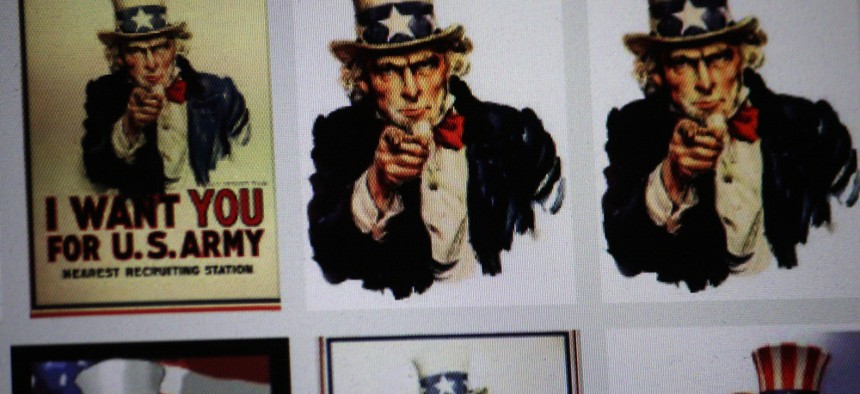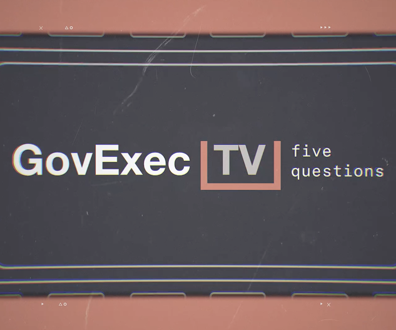
360b/Shutterstock.com
How Money Warps U.S. Foreign Policy
The key divide on America’s role in the world is no longer between Democrats and Republicans. It’s between elites and everyone else.
On Sunday, when Hillary Clinton used an interview with Jeffrey Goldberg to take pointedly more hawkish stances than President Obama on Syria, Iran, and Gaza, observers chalked it up to her presidential ambitions. As one Democratic operative told Politico, Clinton’s advisors are “good poll readers.” On Tuesday, when Rand Paul declined to oppose U.S. airstrikes in Iraq, commentators interpreted it the same way.
The assumption that hawkishness is politically smart is deeply ingrained in the media’s coverage of the 2016 presidential race. But it’s bizarre. Because in both parties, the polling data is overwhelming: Americans think U.S. foreign policy is too hawkish already. Foreign policy has always been more elite-driven, and more insulated from public opinion, than domestic policy. But today’s elite-mass gap is the largest in decades. And regardless of your foreign-policy perspective, that’s a problem for American democracy.
Think about the issues on which Hillary put distance between herself and Obama. She was particularly sharp in her criticism of the president’s reluctance to arm Syria’s rebels. But this supposedly shrewd political maneuver puts Hillary in the company of a mere 20 percent of the population. The last time the Pew Research Centerasked Americans whether they support military aid to Syria’s rebels, 20 percent said yes and a whopping 70 percent said no. When respondents were asked in the same poll to evaluate a series of statements about Syria, the most popular was the “U.S. military is already too overcommitted.”
Hillary also took a harder line than Obama on Iran’s right to enrich uranium—a harder line that would make it harder to reach a final nuclear deal with Tehran. As with Syria, many commentators considered Hillary’s more hawkish stance to be politically astute. But again, the public is actually closer to Obama. According to a University of Maryland poll in July, 61 percent of Americans support a deal that would limit—but not prohibit—Iranian enrichment, while only 35 percent support increasing sanctions in an effort to eliminate Tehran’s enriched uranium altogether.
In general, Hillary made it clear that she supports a more interventionist foreign policy. Unlike Obama, she rarely talks about the financial burden of America’s foreign wars, and the need to balance America’s overseas commitments with its domestic resources. But, here again, the public is on Obama’s side. A Pew poll last year found that 51 percent of Americans believe their government is doing too much overseas, while only 17 percent say it is doing too little. This doesn’t mean Americans want to retreat from the world entirely. A full two-thirds, according to that same Pew poll, support greater American involvement in the global economy. Americans aren’t isolationists; they just don’t want to police the world. According to Pew, only 12 percent of Americans want the U.S. to be the “single world leader,” while 52 percent would prefer the U.S. share global leadership with other countries and be only “as active as others.”
Given these results, why do most commentators think Hillary’s hawkishness is politically wise? Because over the last year or so—as a result of the conflict in Ukraine and the rise of ISIS in Syria and Iraq—elite opinion has grown more hawkish even though public opinion at large hasn’t. When it comes to foreign policy, in fact, the key divide is no longer between Democrats and Republicans. It’s between the elites of both parties and their rank and file. When asked about arming Syria’s rebels, an Iran deal that allows some uranium enrichment, and whether America should do more or less in the world, both Democrats and Republicans overwhelmingly take the more dovish view. On each question, the partisan divide is five percentage points or less.
The real gap emerges when you compare ordinary Americans to elites. According to Pew, for instance, rank-and-file Republicans are 34 percentage points more likely to want America to do less overseas. Rank-and-file Democrats are 31 points more likely to want America to do less. Members of the prestigious, bipartisan Council on Foreign Relations, by contrast, are 20 points more likely to say America should do more.
This helps explain why Rand Paul is shifting in a more hawkish direction as well. In recent weeks, Paul has substantially toughened his line against Russia, ruled out containing a nuclear Iran (a position with which he had previously flirted), pledged support for U.S. aid to Israel (another flip-flop), and remained open to bombing Iraq. He’s also hired one of John McCain’s foreign-policy advisors.
Paul is not staking out these positions to win over actual voters. Given that ordinary Republicans oppose arming the rebels in Syria, want a negotiated deal on Iran, and want America to refrain more from intervening militarily overseas, Paul would probably gain greater public support by sticking with a more dovish line and thus distinguishing himself in a multi-candidate field. What’s motivating him is not the New Hampshire primary but the invisible primary. Paul has been ardently wooing GOP donors, who tend to be far more hawkish than Republicans as a whole, and who have threatened to mobilize against his candidacy. And according to Politico, he’s told several of them that his foreign-policy views are “evolving.”
Hillary Clinton’s hawkishness is more sincere. She’s been on the hawkish end of the Democratic spectrum since entering electoral politics a decade and a half ago. Still, were it not for the influence that moneyed elites wield over the presidential process, it would be much harder for her to take views so at odds with most Democratic voters. Clinton lost in 2008, after all, in large measure because she had backed the war in Iraq while Obama had not. If a credible progressive challenger in 2016 tied Hillary’s current interventionism to her past interventionism under the rubric “she still doesn’t get it,” they’d find a receptive audience, especially in Iowa, where Democratic caucus-goers are particularly dovish.
Yet there’s little evidence that any serious challenger is considering taking this approach. That’s partly because Democratic primary voters, while overwhelmingly dovish, are not focused on foreign policy in the way they were during the Iraq War. And it’s partly because even progressive Democrats like Elizabeth Warren are influenced by the more hawkish perspective common among party donors. That’s especially true on the Middle East. Polling showsthat rank-and-file Democrats are fairly critical of Israel’s recent war in Gaza, for instance. But last month, even progressive firebrands like Warrensupported a Senate resolution so hawkish that it did not even acknowledge that any Palestinians in Gaza had died.
It’s worth analyzing the current moment in historical perspective. For a century, Americans have responded to disillusioning wars by demanding a less interventionist foreign policy. It happened after World War 1, after Korea, after Vietnam, and it’s happening again in the wake of Afghanistan and Iraq. The difference between this moment and past ones is the role of money in politics. As on so many issues, politicians’ need to raise vast sums from the super-rich makes them ultra-responsive to one, distinct sliver of the population and less responsive to everyone else. The way campaign finance warps the political debate over financial regulation is well known. What we’re witnessing this year is a case study in the way it warps the foreign-policy debate as well.
In 2008, Obama was elected president in part because he had deviated from a hawkish, largely bipartisan, elite foreign-policy perspective that facilitated the war in Iraq. Six years later, Obama is still deviating, and so are the American people. Yet the elite consensus is stronger than ever, and in the run-up to 2016, that consensus—more than public opinion—is driving the presidential debate. No wonder Americans are cynical.
(Image via 360b / Shutterstock.com)







